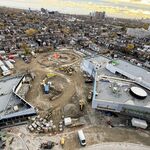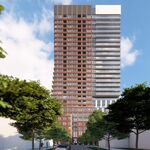The GO network as is, is absolutely incapable of providing meaningful relief to the 400-series highway network, particularly during rush hour when congestion is at its worst. While the 401 is indeed busy most of the time these days, it still moves reasonably well outside of peak hours, aside from some localized slowdowns. However, during rush hour the highway slows to a brutal crawl.
This is a point that some seem to overlook; The GO network faces numerous capacity issues during peak hours, it is lacking the necessary crew, equipment, and infrastructure base—particularly along the critical east-west Lakeshore line. A major bottleneck is the section just east of Union Station, which will remain restricted to two tracks for the next several years due to ongoing Ontario Line construction. Furthermore, 2025 will likely be a transitional year due to the new vendor taking over. A return to even pre-COVID crewing levels probably won’t occur until 2026. While OOI claims they can extract more from the current crew and equipment, the projected incresse is only incremental and far from transformative. Infrastructure upgrades are ongoing and have been for years but true capacity expansion won’t happen until electrification, which was initially targeted for 2031. Given that only the Whitby Yard and the Pearson spur to the airport have any electrification infrastructure built in, full electrification is likely at least a decade away, with 2040 being a more realistic estimate when you consider the historical tendency of major delays(see Crosstown LRT).
Some argue that we should do nothing, and yes making the GO network free is akin to doing nothing for peak period relief but that stance ignores the available peak period capacity within the highway network— spcifically on the 407. Imo, it makes litterally no sense to not take advantage of that spare capacity.




